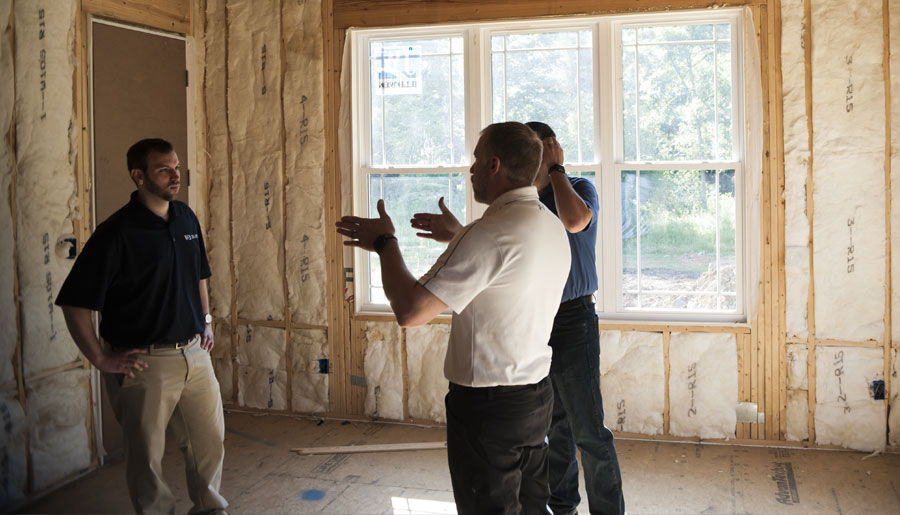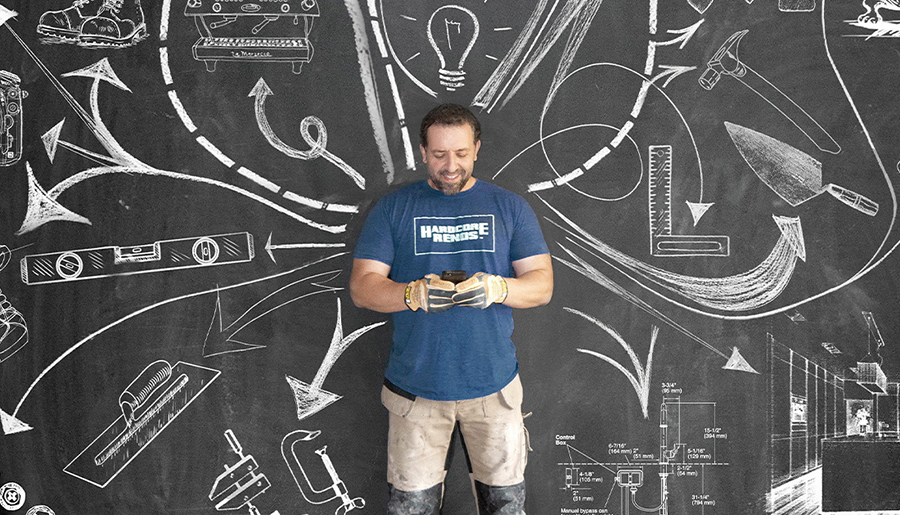Yes, it’s about reducing waste, but it’s also a mindset shift with far-reaching payoffs
Brought to you by JELD-WEN
Jobsite waste bleeds profits in ways builders don’t consider. Take the example of trips to supply houses to pick up forgotten items or exchange incorrect ones. “We have hard evidence from 5,000 suppliers and trades that the total cost can be as much as $10,000 per home,” says consultant Scott Sedam. That’s 50 trips at roughly $200 per trip in labor and overhead. It’s just one of many examples of hidden waste that impacts the vast majority of projects, no matter their size.
The upside, Sedam says, is it’s all preventable. As president of True North, a consulting company in South Lyon, Michigan, he helps production builders implement Lean construction.
Lean is a continuous improvement philosophy that came from auto manufacturing: Toyota used it to grow into one of the world’s largest car makers. Other industries have also embraced it, including forward-thinking building product manufacturers. “The Lean framework provides us with a road map, tools, beliefs, and a system for continuous improvement,” says Bonnie Davis, global director of training for the JELD-WEN Excellence Model (JELD-WEN’s implementation of Lean).
Four steps to harnessing the benefits of Lean
When most builders hear Lean, chances are they envision a system for reducing material waste. It’s that and more. It’s a mindset shift that brings opportunities for better efficiencies across the operation. Here are four steps to help you get there.
1. Take from Lean what makes sense for you
For homebuilders, achieving organizational benefits requires some adjustment to the Lean framework.
“Homebuilding isn’t a controlled manufacturing environment. It’s the equivalent of building cars in people’s driveways,” says Fletcher Groves of SAI, an industry consultant and trainer based in PonteVedra Beach, Florida. “It’s also not the continuous flow process that Lean prefers. It’s build to order, even in a production environment.”
Instead of taking Lean as a whole, Groves says that each builder tends to adopt the pieces most applicable to its business. The results can still be powerful. Sedam has helped more than 200 builders implement Lean over the past dozen years and typically finds potential savings of at least $12,000 to $15,000 per home.
Much of the waste represented by those numbers comesfrom cost variances caused by work redos (including those supply runs). Rather than blaming employees or subs, however, builders who want to solve the problem need to look in the mirror.
2. Start with bid packages, plans, and schedules
What builders often see is a systemic problem that manifests as incomplete or incorrect bid packages, plans, and schedules. “We’ve seen projects with three sets of plans,” says Sedam. “There’s one set on the online portal, a second set that suppliers and trades get, and a third set given to the field project manager. None of them match.”
When the PM’s plans have different details than those used by the plumber or drywaller, mistakes become inevitable.
Most builders have no idea what this is costing them. “Take the simple example of an incorrect keystone over a door,” says Sedam. “The keystone itself might have a price tag of just $10, but we’ve documented the total replacement costs for small items like that to be as high as $1,000.” Those costs get overlooked because the labor, material, andoverhead associated with them get buried in the overall budget.
3. Get the commitment of leadership
While Sedam’s team works with the builder’s staff to uncover and itemize waste, the builder still needs to take corrective action. Companies that succeed at this invariably have a commitment from leadership.
“When we compare those that have knocked the cover off the ball and gotten great rewards to those who have not performed, the difference always comes down to that commitment,” says Sedam.
4. Treat errors as data—not problems
Successful companies also take an experimental attitude toward errors, viewing them not as problems but as data. And rather than casting blame, they focus on analyzing that data and getting their team involved in the improvement effort.
“There’s a Japanese saying that a mistake is a treasure,” says Sedam. “But that’s only true if you measure it.”
“Having a problem-solving process that gets to the root cause of things is valuable because the same problems don’t continue to pop up and put you in a firefighting mode,” says Davis from JELD-WEN. “In a workplace that employs Lean methods, new employees are easier to train. It also creates a better work environment, with more employee engagement, better retention, and improved attendance.”
For assistance with your projects, visit JELD-WEN’s professional portal.



